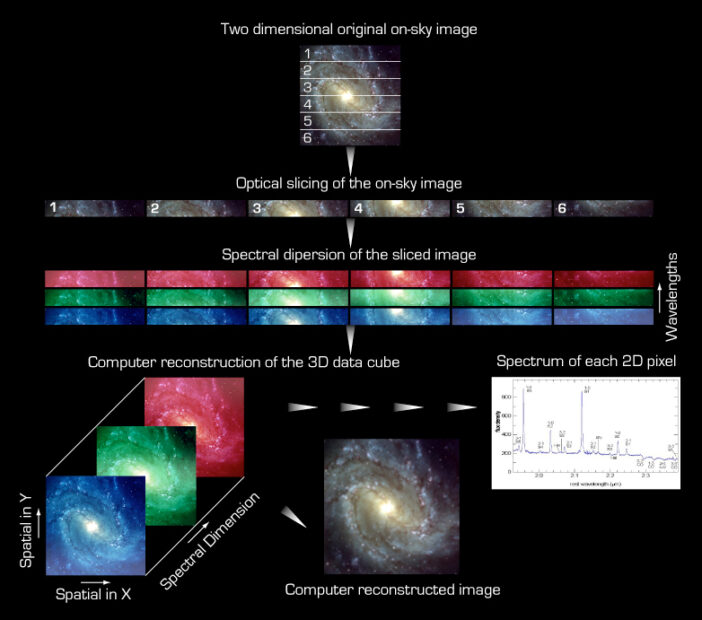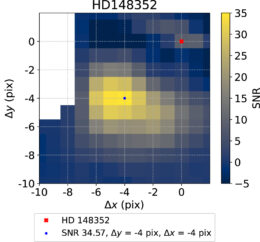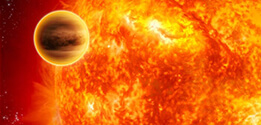Editor’s Note: Astrobites is a graduate-student-run organization that digests astrophysical literature for undergraduate students. As part of the partnership between the AAS and astrobites, we occasionally repost astrobites content here at AAS Nova. We hope you enjoy this post from astrobites; the original can be viewed at astrobites.org.
Title: Detecting Exoplanets Closer to Stars with Moderate Spectral Resolution Integral-Field Spectroscopy
Authors: Shubh Agrawal et al.
First Author’s Institution: California Institute of Technology
Status: Published in AJ
Thus far, the vast majority of known exoplanets have been discovered indirectly, using techniques such as the transit or radial velocity methods, which allow us to infer the presence of planets based on their effects on their host stars. However, to fully characterize an exoplanet, we need to observe it directly. As you might guess, picking out the light coming from a planet, as opposed to the star it’s orbiting, is no small feat given how bright stars are compared to planets. Astronomers have come up with lots of tricks over the years to improve imaging techniques, from using coronagraphs to block out some of the star light to designing adaptive optics that correct for atmospheric effects and employing complex signal-processing algorithms. However, direct imaging is still typically restricted to observing planets that are massive, bright, and live quite far from their host stars. The relative brightness and physical separation from the star make these planets much easier to see than the smaller, closer planets whose signals are overpowered by starlight.
But today’s authors have a plan to directly observe planets orbiting closer to their host stars than ever before! Their idea hinges on using spectroscopy to better differentiate between planets and their host stars.
The new detection method involves a technique called integral field spectroscopy (IFS), in which a field of view is split into a grid, with a spectrum taken for each cell in the grid (Figure 1). The idea behind using IFS for finding planets depends on differentiating between the spectral features of planets and stars to identify which grid cells are sampling the planet’s light. For example, the planet might have features like water or carbon monoxide, whereas the star has a more complex spectrum with many features blended together.

Figure 1: Diagram describing integral field spectroscopy, where an image is split into smaller cells, each with its own spectrum. [ESO; CC BY 4.0]

Figure 2: The left panel shows a model spectrum for the planet, and the right panel shows a few of the many components that are used to model starlight. [Adapted from Agrawal et al. 2023]

Figure 3: The resulting detection map for one of the test-case stars. The star is the larger bright area in the middle, and the M-dwarf companion is the small bright area marked by the red cross. [Agrawal et al. 2023]
Based on the success of the IFS test, the authors conclude that IFS planet detection could be a really powerful way to find closer-in planets, especially given the IFS instruments on JWST and the capabilities of future Extremely Large Telescopes. Probing these close-in planets is especially important as radial velocity surveys have indicated that there should be quite a few Jupiter-mass planets within a few astronomical units of their host stars, but existing imaging techniques aren’t able to resolve those small separations. Finally, the authors show that their approach to modeling the planet and star light at the same time helps to retain more information about the planet’s atmosphere, and it could be a really promising method for measuring compositions and studying habitability in the coming years!
Original astrobite edited by Jack Lubin.
About the author, Isabella Trierweiler:
I’m a fifth-year grad student at UCLA. I’m interested in planet formation, and I study the compositions of exoplanets using polluted white dwarfs. In my free time, I like knitting, playing train games, and growing various fruit trees.
